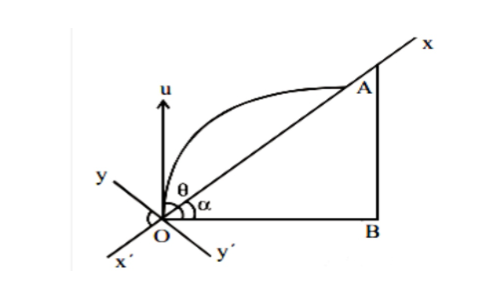In physics, projectile motion refers to motion that is shot or flung in a straight line, without a change in direction or speed. This type of motion is often associated with projectiles and projectiles are a basic example of projectile motion. Projectile motion can be used to describe the motion of a cannonball, a bullet, a baseball, or a rocket. It can also be used to describe the motion of a cannon, a machine that shoots projectiles at a high speed, such as a howitzer or a machine gun.
What is projectile motion?
In physics, projectile motion is a type of motion in which an object is propelled forward by a force. The object can be a projectile, such as a baseball, or a fluid, such as a liquid or gas. The motion of an object is usually described in terms of its initial velocity, the direction of its motion, and the force with which it is moving. The term is often used to describe the motion of a ball as it is thrown or hit by a baseball pitcher.
Inclined Planes
An inclined plane is a horizontal surface that tilts from its normal orientation. An inclined plane is also referred to as an “unbalanced” plane. The inclined plane and the vertical component of initial velocity makes an angle θ with the inclined plane. An inclined plane is characterised by a “critical angle” at which the plane begins to rotate to a perpendicular orientation.
Projectile motion up an inclined plane
When the projectile is in free fall, the vertical component of its velocity, the speed of the projectile, is dependent on the angle of inclination and the horizontal component of its velocity is dependent on the distance to the surface. In order to achieve the desired height and velocity, the projectile will have to accelerate through successive turns and then decelerate, as the projectile will have to travel up the inclined plane.
 Projection of a particle is upward with an initial vertical velocity up from an incline that makes an angle name α relative to the component which is horizontal t of velocity of projection. The inclined plane and the vertical component of initial velocity makes an angle θ with the inclined plane.
Projection of a particle is upward with an initial vertical velocity up from an incline that makes an angle name α relative to the component which is horizontal t of velocity of projection. The inclined plane and the vertical component of initial velocity makes an angle θ with the inclined plane.
Trajectory followed by a projectile motion
The trajectory of the projectile is the path that the projectile takes during the flight from the point of release to the point of impact. For example, if you were to throw a ball into the air, it would take a trajectory and the ball would continue to move through the air until it hit the ground.
Time of Flight for projectile motion up an inclined plane
Time of flight is the time taken for a projectile to travel from the point of launch to the point of impact. In the time of flight, the projectile is constantly moving forward, but the time taken for a portion of the projectile to travel is dependent on several factors, including the speed and direction of the projectile and the distance between the two points. The time of flight of a projectile can also be described mathematically as the time taken for a particle to go a certain distance in a certain direction. The formula used to calculate the time of flight of a projectile is therefore dependent on the direction and speed of the projectile.
T = 2uSin(θ-α)
g Cosα
Horizontal Range of flight for a projectile motion up an inclined plane
In the case of a projectile, the range is the maximum distance from the shooter to the target. The range may be the distance from the target to the shooter. The range is often expressed in terms of height of the target above the shooter, because the height of the target is a good indicator of the range.
R = u² (1-sinα)
gcosα
Maximum Height
The maximum height of a projectile motion is the height of the projectile after it has been launched from its launch point at a velocity that is constant.
H = u² sin²(θ – α)
2g
Conclusion
The motion of a projectile (also called projectile motion) is the motion of the projectile as it travels through space. The motion of a projectile can be calculated by knowing the initial and intermediate velocities and angles, and then solving the velocity and angle. The notation used for the velocity is the velocity of the projectile divided by its mass. The notation used for the angle is the angle of the projectile divided by its mass. The projectile motion describes how the projectile moves when it is thrown. The projectile motion is caused by the force that is exerted by the user upon the projectile when they throw the projectile.
 Profile
Profile Settings
Settings Refer your friends
Refer your friends Sign out
Sign out






